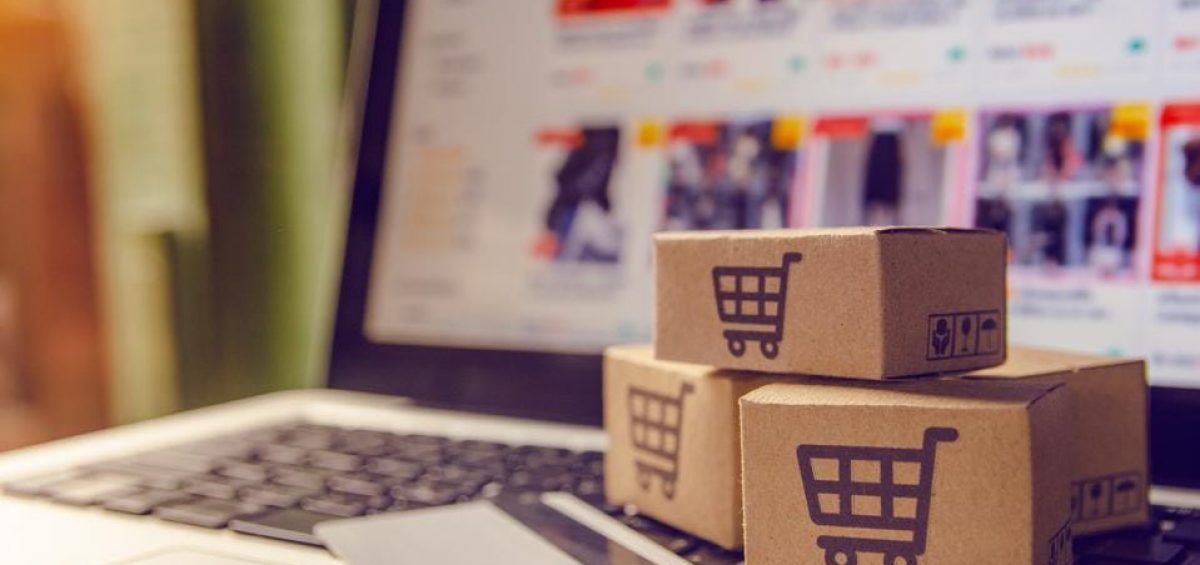The pandemic shifted how we shop and in a big way. New data from the Adobe Digital Economy Index, which was released during this week’s Adobe Summit, provided one of the most comprehensive reports of its kind. This data filled report provided a number of key metrics including a headline data point showing that U.S. online retail spend has generated over $1.7 trillion dollars in revenue over the last two years. From this, Adobe predicts that the growth, partially driven by inflation, will continue in 2022 with a record year coming.
The report is based on Adobe Analytics data from March 2020 through February 2022 from one trillion visits to retail sites and over 100 million SKUs. In addition, I had the chance to speak one on one with Adobe Vice President, Patrick Brown, who is part of the leadership team driving the index. Here are a few key takeaways that caught my attention.
Online Shopping Spikes Show Durability
It’s not a surprise that the biggest spike in online shopping came at the beginning of the pandemic. When people across the globe were stuck at home spending surged 84% from February to May 2020. And while some might have expected that surge to lessen once businesses slowly started reopening, it continued. 2020 saw a 41% YoY increase in online shopping with revenues reaching $812 billion. 2021 saw continued growth with almost revenues increasing to $885 billion, a 9% YoY increase. Adobe is estimating that 2021 will see revenues reach $1 trillion.
Some Surprises in Top Growth Categories
Consumer behavior has changed. The simplicity and convenience of online shopping is being realized across a number of categories. The biggest breakout category for online shopping was surprisingly groceries. The hoarding and panic buying at the pandemic led to a huge spike in sales that were more than double (118%) what they were in 2019. Revenue increased 103% YoY in 2020 and continued growth with a 7.9% YoY increase in 2021. Consumers are shopping in the most convenient way for them. The stores that don’t cater to this need will miss out on revenue.
While growth in online grocery shopping was a moderate surprise, electronics solidified their place at the top of the e-commerce category list. Working and learning from home coupled with stimulus payments and annual demand during the holiday season led to a 26% YoY growth in 2020 and an 8% YoY growth in 2021.
What’s most interesting here is the shift in market share. In 2019, electronics made up 23% of the online market share. Groceries held just 7%. Today electronics market share is down to 18% and groceries are up to almost 10%. A clear shift away from buying certain premium goods online, while spending shifted toward staples. It will be interesting to monitor how growth over the next decade continues or if new categories emerge and take over the top spot.
Growth Doesn’t Happen Alone
The growth numbers are positive, but according to the data from Adobe, they are not happening solely because people are buying more. Online growth was a little over $300 billion from 2020 to 2021. $26 billion of that can be attributed to inflation. 2% inflation growth happened in 2020, 31% happened in 2021, and unfortunately for consumers, it’s looks like that trend will only continue an upward trajectory in 2022.
Out of Stock and Shipping Logistics Still Cause Headaches
One thing that has been almost normalized in the pandemic is the much spoken-about supply-chain-driven shortages. Consumers received over 59 billion out-of-stock messages in the last two years. Larger spikes in OOS messages mirrored spikes in the pandemic and holiday shopping seasons. And according to the data, that trend might be here to stay. While the logjams outside ports across the globe aren’t nearly as bad as they were a few months ago, we are still experiencing the ripple effect fallout.
But that’s not the end of the story. Consumers and retailers are responding appropriately since delays and OOS messages have become expected. During the holiday season, consumers were shopping earlier than ever to make sure they were able to get their gifts on time. Retailers were offering more deals earlier than ever, some starting mid-November to attract consumers trends that will likely remain in place in the future.
Beyond that, retailers are turning to technology to continue to nurture customer relationships. AI-powered customer data platforms (CDP) and other MarTech solutions from companies like Adobe, Treasure Data, Salesforce, Twilio, Oracle and Microsoft to name a few are helping retailers stay on top of their customer data in order to offer top-notch customer experiences. And as retailers realize the power of customer data, more will add technologies to their marketing stack.
Different Fulfillment Options Remain Desirable to Consumers
Online shopping doesn’t always mean shipping. Curbside and buy online, pick up in-store (BOPIS) had big spikes in 2020, reaching all-time highs in 2021. In 2022 though, we’ve seen a slight dip in pick-up orders, but it’s still a viable option for a lot of consumers, something smart retailers need to keep in mind.
Adobe’s data also showed Buy Now Pay Later (BNPL) programs growing in popularity. So far this year, BNPL programs are up 53% YoY. This is likely due to inflation as people want products immediately but don’t have all of the money upfront. BNPL programs also allow consumers to avoid paying credit card interest or avoid borrowing money. Direct providers of BNPL are a burgeoning market. Companies like Affirm, Afterpay and Klarna offer BNPL at the point of sale. As our economic woes are likely to continue in the coming months, more companies could step into that arena, working with more retailers to offer these types of programs. We should also expect more regulations to emerge to try to control this new market.
Online Shopping Paradigm Shift Here to Stay
We are operating in a digital-first world. Consumers want to be able to go online, be it an app, a social media platform, or a website, and find the products they want. This means retailers need to be ready to reach them wherever they are. Leveraging a customer data platform that connects the entire organization and eliminates unnecessary silos is table stakes if retailers want to take part in the growth. Data, especially first-party data, will be more important than ever to determine where customers are shopping and how they like to keep in touch with a brand.
Retailers need to be prepared to offer unparalleled customer experiences that will hopefully lead to cross-sells, upsells, and more loyal customers in the long run. Beyond customer data, retailers need to be able to see where products are in the supply chain and if any potential issues could be on the horizon so pivots can be made. The retailers that adopt strategies that are fluid and agile along with technologies that enable the fluidity and agility will come out on top for years to come.




Leave a Comment